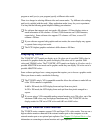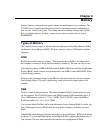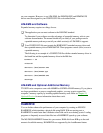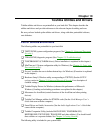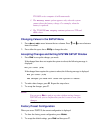
on your computer. However, to use LIM-EMS, the EMM386.EXE and HIMEM.SYS
drivers must be assigned in your CONFIG.SYS file as described below.
LIM-EMS and Software
Expanded memory requires two things for use:
The application you use must conform to the LIM-EMS standard.
To determine if your software can take advantage of expanded memory, refer to your
software documentation. The manual should tell you clearly if your package can use
expanded memory and may even tell you which version(s) of LIM-EMS it supports.
Your CONFIG.SYS file must contain the HIMEM.SYS extended memory driver and
the expanded memory driver EMM386.EXE. These programs control (drive) access to
expanded memory.
The following is an example of a CONFIG.SYS file with the extended memory driver in
the fourth line and the expanded memory driver in the fifth line:
buffers = 30
files=30
device=c:\dos\setver.exe
device=c:\dos\himem.sys
device=c:\dos\emm386.exe
dos=high
LIM-EMS and Optional Additional Memory
T2150CD series computers come with 4096KB or 8192KB of RAM memory. If you plan to
use large spreadsheets or process complicated graphics, you may want to expand the
computer’s memory capacity by installing optional memory cards. Refer to Chapter 12,
Optional Devices for more information about these cards.
RAMDRIVE
You can further enhance the performance of your computer by creating an MS-DOS
RAMDRIVE, which simulates a physical disk using RAM. With no moving parts, a
RAMDRIVE is much faster than a diskette or hard disk and it saves battery power. Loading
programs or frequently accessed data files into a RAMDRIVE speeds up your software.
The MS-DOS RAMDRIVE feature lets you create a RAM disk from 4KB up to the total
amount of available memory. RAMDRIVEs are supported by the AutoResume feature.






